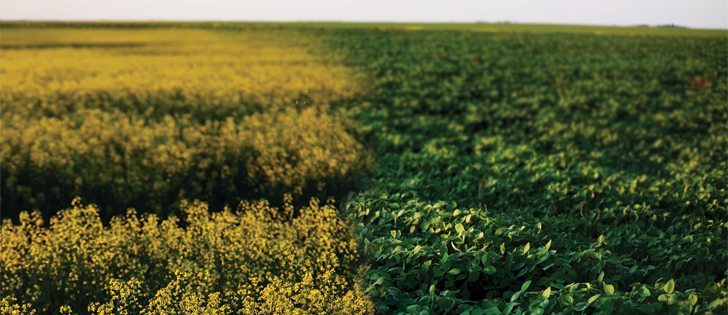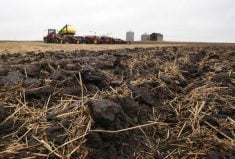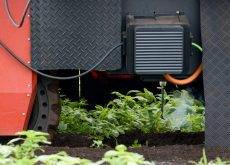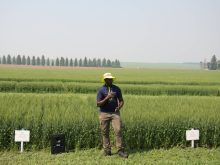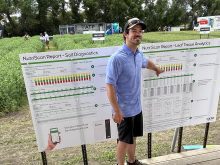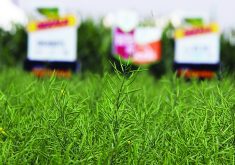How does a farmer grow Roundup Ready canola in rotation with a higher value Roundup Ready soybean crop?
It’s a challenge many producers are facing in light of the improved economics and expansion of soybeans on the Prairies. But it’s a problem growers are solving, said Monsanto’s weed management technical lead Sean Dilk.
“Growers want the benefit of Roundup Ready technology in their rotation with soybeans and canola,” said Dilk.
“They know there is an increased level of management complexity if you’re going to grow both crops. But they are making it work.”
Read Also

Equipment manufacturing may return to Canada
Some ag equipment and automotive manufacturers are now adjusting their production and distribution to avoid tariff costs in relation to supplying the Canadian market.
Dilk said Monsanto is already funding research to document how competitive volunteer Roundup Ready canola is in a Roundup Ready soybean crop. Because of the large amount of seed that a canola plant can produce, control of volunteer canola is a prime concern for Monsanto and its customers.
“For some growers, even one volunteer canola plant is one plant too many,” said Dilk.
“Our research is focused on establishing best management practices (BMP) to reduce the number of glyphosate-tolerant canola seeds going into the seed bank. We want to try and eliminate every possible volunteer canola seed.”
Dilk said the BMP research will look at five areas to develop a cropping system that will allow both crops to be grown successfully in a rotation.
Starting with the canola crop, Dilk said it is important to reduce shattering and minimize the number of canola seeds that fall to the ground.
“It starts with proper setup on your combine. Do everything you can to reduce the number of seeds that get blown out the back.”
Dilk said research has shown that delayed tillage allows germination and emergence of volunteer canola plants.
Once the seeds germinate and emerge, they will be killed by winter conditions. This is applicable in areas like the Red River Valley where tillage is necessary.
Outside the valley, where zero tillage is the norm, it’s probably easier to grow the two Roundup Ready crops together in a rotation.
Dilk said the unwanted seeds sit on the surface with little chance of becoming viable plants the following spring.
Inserting a different group of crops between Roundup Ready canola and Roundup Ready soybeans is one way to make the two crops work in the same field.
Dilk said throwing in buffer crops such as corn, wheat or oats opens the window to herbicide options that will control the unwanted volunteers.
A longer crop rotation naturally allows the producer to access the growing number of chemical control options.
“There are more herbicide options for the soybean crop itself. Growers have Heat, Valtera, Authority and Authority Charge,” said Dilk.
“These are all relatively new products, so we have to try to understand which one will have the most impact when it comes to managing volunteer canola.”
Liberty Link seed types are another option, say agrologists. Use chemicals with varying modes of action when possible.
Monsanto said the research is also designed to help producers understand the options they have with tank mixes and herbicide rotations.
“Don’t rely on glyphosate alone. It’s just good management to mix up your herbicides so you don’t create resistance,” Dilk said.
“Sometimes, all it takes is to add one herbicide to your tank mix. That will save you a lot of problems later on.”
It may sound obvious, but Dilk reminded growers that a healthy soybean crop competes better with volunteer canola plants and other weeds.
“You need a good canopy to compete with weeds. That means selecting the right variety, establishing the right plant population, row spacing and everything else that goes along with best management practices.”
Canola combine facts
- The normal seeding rate for canola is five to six pounds per acre, although some farmers go as low as three pounds.
- In a typical year, a 60 bushel per acre canola crop at bushel weight of 60 lb. weighs 3,600 lb. per acre.
- A combine adjusted for minimum seed loss still loses one percent, or 36 lb. of canola seed per acre. That equates to six times the normal seeding rate for canola.
- Very few combines are set up to achieve only one percent loss in canola. Most are at three, four or even five percent. That’s a lot of volunteer canola that needs to be cleaned up for next year’s crop.
Source: Staff research


